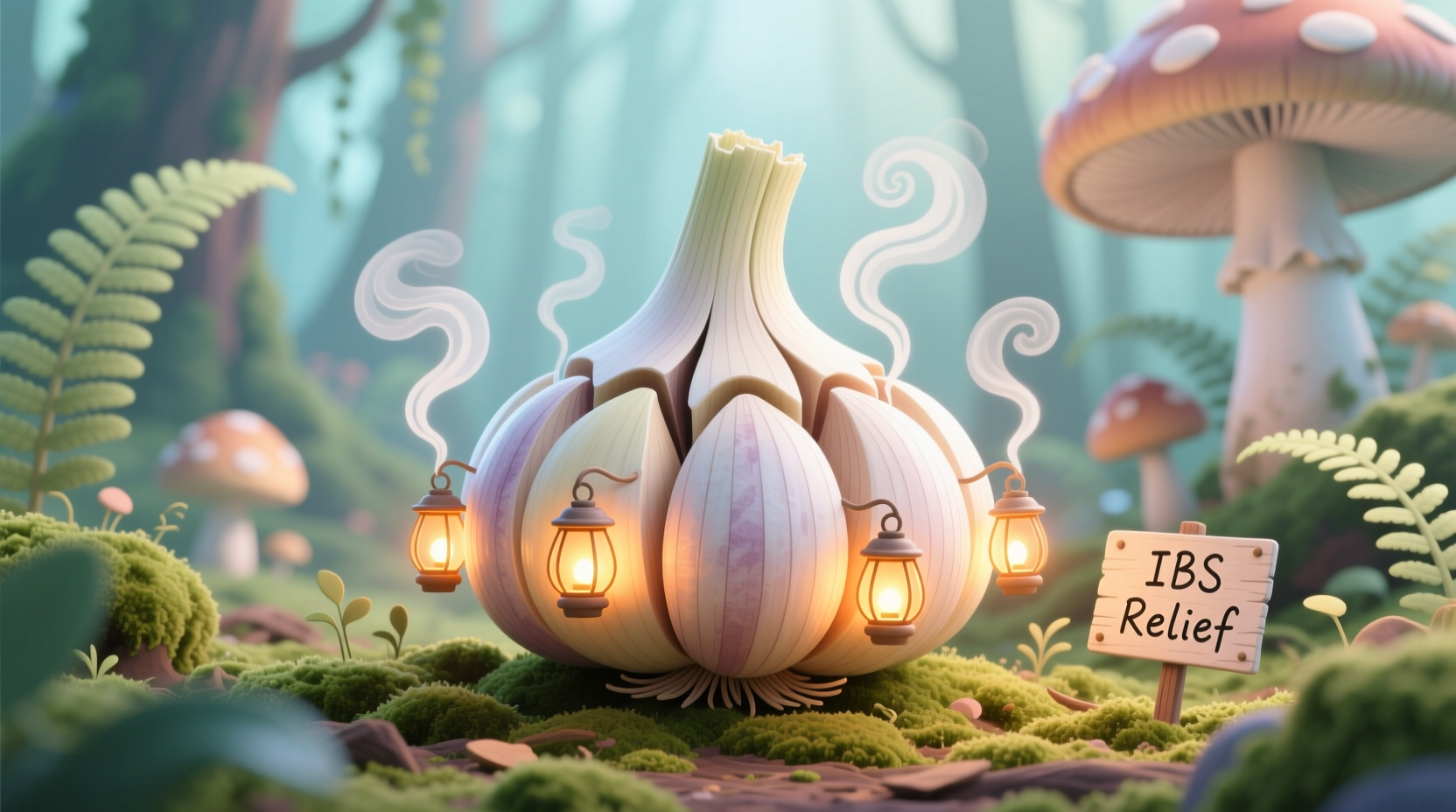Why Garlic Triggers IBS Symptoms: The Science Explained
Garlic contains significant amounts of fructans, a type of oligosaccharide classified as a high-FODMAP food. These short-chain carbohydrates resist digestion in the small intestine and ferment rapidly in the colon, producing gas and drawing water into the bowel. For individuals with IBS, this process triggers classic symptoms including bloating, abdominal pain, and altered bowel habits.
According to Monash University's comprehensive FODMAP testing, just one clove of garlic (approximately 3 grams) contains 1.3 grams of fructans - well above the threshold that triggers symptoms in most IBS sufferers. Research published in the Gastroenterology journal confirms that 75% of IBS patients experience symptom exacerbation after consuming high-fructan foods like garlic.

Practical Garlic Management Strategies for IBS
Complete elimination isn't always necessary. The key is understanding your personal tolerance threshold and implementing smart culinary techniques:
During the Elimination Phase
For the initial 2-6 week elimination phase of the low-FODMAP diet, completely avoid:
- Fresh garlic cloves
- Garlic powder
- Garlic salt
- Pre-made sauces containing garlic
Safe Flavor Alternatives
These evidence-based substitutes maintain culinary integrity while being IBS-friendly:
| Alternative | How It Works | Best For | FODMAP Status |
|---|---|---|---|
| Garlic-infused oil | Fructans don't dissolve in oil | Sautéing, dressings | Low FODMAP (1-2 tbsp) |
| Green tops of scallions | Contains minimal fructans | Garnishes, stir-fries | Low FODMAP (2-3 stalks) |
| Chives | Different chemical composition | Finishing dishes | Low FODMAP (1-2 tbsp) |
| Asafoetida (hing) | Garlic-onion substitute | Curries, lentils | Low FODMAP (pinch) |
Evidence-Based Reintroduction Protocol
After symptom improvement during elimination, systematically test garlic tolerance:
| Phase | Timeline | Testing Protocol | Success Indicator |
|---|---|---|---|
| Baseline | 2-6 weeks | Complete garlic elimination | Symptom reduction ≥50% |
| Initial Test | Day 1 | 1/8 clove garlic in oil | No symptoms after 72h |
| Progression | Weekly | Double previous amount | Track symptom severity |
| Tolerance Level | 4-6 weeks | Identify personal threshold | Establish safe consumption |
Research from the Monash University Department of Gastroenterology shows that only 30% of IBS patients can tolerate even small amounts of garlic long-term. Most require complete avoidance or strict limitation to occasional use.
Hidden Sources of Garlic in Everyday Foods
Garlic appears in unexpected products that can sabotage your IBS management:
- Pre-made salad dressings (check for "natural flavors")
- Processed meats (sausages, deli meats)
- Instant soup mixes
- Ready-made sauces (pasta sauce, stir-fry sauce)
- Seasoned salts and spice blends
When dining out, specifically request "no garlic" as many restaurants use garlic as a base flavoring. The International Foundation for Gastrointestinal Disorders reports that 68% of IBS patients experience symptom flares from hidden garlic in restaurant meals.
Garlic Research Timeline: Key Scientific Developments
Understanding of garlic's impact on IBS has evolved significantly:
| Year | Research Milestone | Clinical Impact |
|---|---|---|
| 2005 | First identification of fructans as IBS triggers | Foundation for FODMAP concept |
| 2010 | Monash University publishes first garlic FODMAP data | Quantified garlic's fructan content |
| 2014 | Garlic-infused oil validated as low-FODMAP option | Provided practical alternative |
| 2018 | Personalized tolerance thresholds established | Individualized reintroduction protocols |
| 2022 | Long-term dietary adherence studies published | 75% symptom improvement with proper management |
Implementing Garlic Management in Real Life
Successful IBS management requires practical strategies beyond simple elimination:
Meal Planning Approach
Designate "garlic-free" cooking tools to prevent cross-contamination. Prepare large batches of garlic-infused oil at the beginning of the week for consistent flavoring. When following recipes, immediately identify potential garlic substitutions before starting preparation.
Dining Out Strategies
Research restaurant menus in advance. Call ahead to explain your dietary needs - many establishments now accommodate FODMAP requests. When ordering, specify "no garlic in any form" as chefs often add garlic to "enhance" dishes without listing it.
Social Situation Management
Bring garlic-free dishes to gatherings. Explain your dietary needs simply: "I have a digestive condition that requires me to avoid certain carbohydrates found in garlic." Most people understand when you frame it as a medical necessity rather than preference.
When Garlic Might Be Tolerated: Important Considerations
Not all IBS patients react to garlic equally. Your specific IBS subtype affects tolerance:
- IBS-D (diarrhea-predominant): Typically most sensitive to garlic
- IBS-C (constipation-predominant): May tolerate small amounts
- IBS-M (mixed): Variable tolerance requiring careful testing
The American College of Gastroenterology notes that individual responses vary significantly based on gut microbiome composition. A 2023 study in Clinical Gastroenterology and Hepatology found that patients with higher levels of Bifidobacterium showed better garlic tolerance.











 浙公网安备
33010002000092号
浙公网安备
33010002000092号 浙B2-20120091-4
浙B2-20120091-4